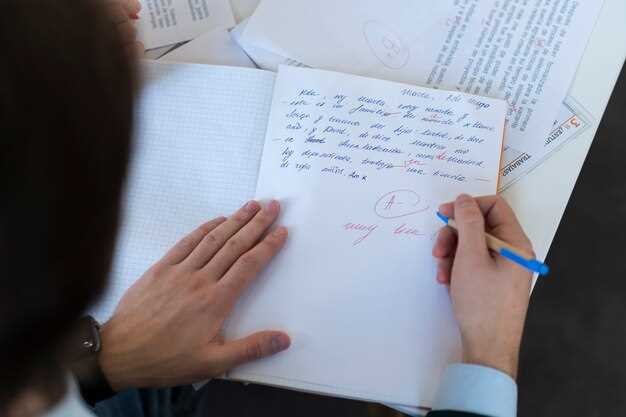
Begin by clearly defining your thesis statement–this single sentence will guide your entire essay. A strong thesis not only states your argument but also hints at the evidence you’ll use to support it. For example, instead of writing, “Shakespeare’s plays are influential,” try, “Shakespeare’s use of soliloquies in Hamlet reveals the complexity of human emotion.”
Organize your essay into three main sections: introduction, body, and conclusion. Each body paragraph should focus on one key point, supported by specific examples or quotes. Use transitions like “furthermore” or “in addition” to connect ideas smoothly, ensuring your argument flows logically.
Analyze, don’t summarize. Instead of retelling the plot, explain how the author’s choices–like symbolism or tone–contribute to the overall meaning. For instance, discuss how the green light in The Great Gatsby represents Gatsby’s unattainable dreams.
Edit ruthlessly. Remove unnecessary words and ensure every sentence adds value. Tools like Grammarly can help catch grammar errors, but always read your essay aloud to spot awkward phrasing. A polished essay is concise, clear, and compelling.
Practice regularly. Write at least one analytical essay every two weeks to refine your skills. Over time, you’ll notice improvements in your ability to craft strong arguments and present them effectively.
How to Choose the Right Topic for Your Analytical Essay
Pick a topic that genuinely interests you. Writing about something you care about makes the process more engaging and helps you produce a stronger analysis. If you’re passionate about the subject, your enthusiasm will show in your work.
Focus on topics with enough depth for analysis. Avoid overly broad subjects like “climate change” and narrow them down to specific aspects, such as “the impact of renewable energy policies on urban development.” This approach ensures you have enough material to explore critically.
Consider the availability of credible sources. Before finalizing your topic, check if there are enough scholarly articles, books, or reliable data to support your analysis. A well-researched essay relies on solid evidence.
Ensure the topic aligns with the assignment guidelines. If your essay requires a specific focus, such as a literary analysis or a historical perspective, choose a subject that fits those parameters. This keeps your work relevant and on track.
Test your topic by drafting a preliminary thesis statement. If you can clearly articulate your main argument or perspective, the topic is likely a good fit. If not, refine it further until you find a clear angle to explore.
Structuring Your Essay for Maximum Clarity and Impact

Begin with a strong thesis statement that clearly states your main argument. This guides your reader and sets the tone for the entire essay. Place it at the end of your introduction to ensure it connects smoothly with your supporting points.
Organize your body paragraphs logically. Start each paragraph with a topic sentence that introduces its main idea. Follow with evidence, analysis, and examples. Keep paragraphs focused; avoid mixing multiple ideas in one section.
Use transitions to maintain flow. Words like however, therefore, and in addition help connect ideas between paragraphs. This improves readability and ensures your argument progresses naturally.
Prioritize clarity over complexity. Avoid overly long sentences or jargon. Break down complex concepts into digestible parts. Your goal is to communicate, not to confuse.
End with a concise conclusion. Summarize your main points without introducing new information. Restate your thesis in a way that reinforces your argument and leaves a lasting impression.
Techniques for Analyzing Evidence and Building Strong Arguments

Break down your evidence into smaller parts to identify patterns, contradictions, or gaps. For example, if analyzing a historical event, separate facts from interpretations and assess their reliability.
- Compare multiple sources to verify accuracy and consistency.
- Ask critical questions: Who created the evidence? What was their purpose? How does it support your argument?
- Use direct quotes sparingly, and always explain their relevance to your point.
Organize your argument logically by grouping related evidence into clear sections. Start with the strongest points to capture attention, then build on them with supporting details.
- Introduce each piece of evidence with context to show its significance.
- Link evidence to your thesis statement to maintain focus.
- Address counterarguments by acknowledging opposing views and explaining why your position is stronger.
Use transitions to connect ideas smoothly. Phrases like “This demonstrates” or “As a result” help readers follow your reasoning without confusion.
Finally, revise your argument to ensure clarity and precision. Remove unnecessary details and tighten your language to make every word count.
Polishing Your Essay: Editing and Proofreading Strategies
Read your essay aloud to identify awkward phrasing or unclear sentences. Hearing the words helps catch errors your eyes might miss.
Set your work aside for at least a few hours before editing. Returning with fresh eyes makes it easier to spot mistakes and improve clarity.
Use tools like Grammarly or ProWritingAid for initial grammar and spelling checks, but don’t rely on them entirely. Always review their suggestions manually for context and accuracy.
Focus on one editing task at a time. Check for structure and flow first, then move to grammar, punctuation, and consistency. This prevents overwhelm and ensures thoroughness.
Ask a friend or classmate to review your essay. A second perspective can highlight areas for improvement you might overlook.
Ensure your thesis statement is clear and directly supported by each paragraph. Remove any sentences that don’t contribute to your argument or narrative.
Pay attention to transitions between paragraphs. Each one should logically connect to the next, guiding your reader smoothly through your ideas.
Double-check formatting, citations, and references. A polished essay includes proper adherence to style guidelines like APA, MLA, or Chicago.
Print your essay for final proofreading. Reading on paper often reveals errors that are harder to catch on a screen.
Finally, read your essay backward, sentence by sentence. This technique helps focus on individual words and details, reducing the chance of overlooking small errors.